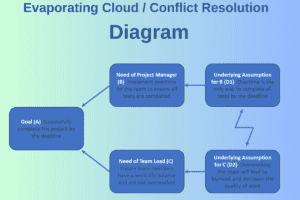The A3 Problem Solving Process: A Step-by-Step Guide to Use an A3 Report for Problem-Solving Success
What is the A3 Process and why is it important?
The A3 Process problem solving process is a methodology originally developed by Toyota. This methodology (and tool) is also used by many organizations, particularly in the field of quality management. A3 is the paper size commonly used for this process, which is approximately 11 inches by 17 inches. The A3 report is an effective way to present and communicate a problem and its proposed solution.
Understanding the A3 Process
The A3 process involves a structured approach to problem-solving, where the entire process is documented on a single sheet of paper. It helps teams identify the problem, analyze the current situation, and determine the root cause. The A3 process encourages cross-functional collaboration and ensures proper communication throughout the problem-solving journey.
The importance of problem-solving
Problem-solving is an essential skill that every organization needs to cultivate. It helps teams overcome challenges, improve processes, and achieve their goals. Without effective problem-solving, issues can persist, leading to inefficiencies, customer dissatisfaction, and lost opportunities. The A3 process provides a systematic framework that guides teams in solving complex problems efficiently.
Benefits of using the A3 Process
The A3 process offers several benefits to organizations. Firstly, it promotes a customer-focused mindset by encouraging teams to understand the problem from the customer’s perspective. Secondly, it facilitates data-driven decision-making by analyzing the current state and identifying the root cause based on evidence. Thirdly, it encourages teams to implement countermeasures and continuous improvement, leading to sustainable solutions. Lastly, it fosters collaboration and alignment among team members, promoting a culture of problem-solving and innovation.
So, if you’re in search of a problem-solving method that’s versatile, inclusive, and fosters creativity, look no further! A3 will not only aid in identifying and resolving issues but also provide the foresight to preempt them in the future.
How does the A3 Process work?
The A3 process consists of several steps that guide teams in effectively solving problems:
Step 1: Define the problem or need
In the first step of the A3 journey, it’s paramount to uncover the nature of the problem or expose the need. This stage is an investigative mission into the web of the problem, unearthing its many dimensions, complexities, and ramifications. Meanwhile, a holistic panorama of the desired outcome must be brought into sharp focus, acting as a beacon in the fog of ambiguity. By crystallizing this intricate problem or need statement, the A3 process is primed for a fluid and potent problem-solving odyssey.
Step 2: Analyze the current situation
With the problem or need sharply defined, the A3 odyssey progresses to the next waypoint: unraveling the threads of the current situation. This phase embarks on a data excavation quest, meticulously gathering crucial intelligence and pinpointing process chokepoints. Concurrently, it decodes the enigmatic factors seeding the problem.
By thoroughly investigating the issue at hand, you’re able to highlight the hidden pathways that lead to the root cause. This newfound understanding cultivates fertile ground for designing tailored, precision-targeted solutions. It’s like a roadmap to problem resolution, spotlighting the pitfalls to avoid and the routes to accelerate towards success.
Step 3: Identify the root cause
Spotting the root cause is a pivotal juncture in the problem-solving trajectory. This stage mandates exhaustive analysis and scrutiny to unveil the fundamental triggers of the problem. The A3 mechanism nudges teams towards potent tools such as Root Cause Analysis (RCA) and the PDCA (Plan-Do-Check-Act) cycle, thus augmenting their capabilities to identify and tackle the root cause with precision and effectiveness.
How to effectively use the A3 Report
The A3 report is a key component of the A3 process. It serves as a visual and concise document that captures the problem statement, current state analysis, root cause, and proposed solutions. Here are some key aspects of effectively using the A3 report:
An overview of the A3 Report
The A3 report typically includes sections such as background information, the current condition, the problem statement, root cause analysis, countermeasures, and future state analysis. Each section provides a clear and concise overview of the problem and its proposed solution. The background information section provides context for the problem and presents relevant data and facts that led to the need for the A3 report. This section helps the reader understand the significance of the problem and why it needs to be addressed.
Overall, the A3 report provides a structured and disciplined approach to problem-solving and decision-making. It fosters collaboration and communication among stakeholders and encourages a data-driven mindset. The report helps teams identify, analyze, and solve complex problems effectively.
Creating an A3 Report: Structure
Creating an A3 report can be simplified by using available examples and templates. Many organizations provide sample A3 reports that can be customized to fit specific problems. Templates help maintain consistency and ensure that all necessary information is captured.
You can create a template simply in MS Excel. The sections and bulleted steps to create are as follows:
- Theme/Title: A concise statement of the problem or issue to be addressed.
- Background: Contextual information about the problem, including its relevance or impact.
- Current Condition: Detailed analysis of the current situation, often including visual aids.
- Goal: A measurable and achievable goal that addresses the problem.
- Root Cause Analysis: Identification of the underlying causes of the problem, often using tools like the 5 Whys or Fishbone Diagram.
- Countermeasures: Proposed solutions to address the root causes of the problem.
- Implementation Plan: A detailed plan for implementing the proposed solutions, including specific tasks, responsible persons, deadlines, and required resources.
- Follow-up: A plan for evaluating the effectiveness of the implemented solutions, including key performance indicators or other relevant metrics.
- Reflections: Reflection on the process and outcomes, identifying any lessons learned or insights that could be useful in future problem-solving efforts.
By following this structure and using available examples and templates, you can create an A3 report that effectively communicates the problem, analysis, and proposed solutions. An image of a report example on the Lean Enterprise Institutes website for reference can be found here.
The A3 Thinking process
The A3 process is not just about filling out a report; it involves a way of thinking. A3 thinking encourages individuals to question assumptions, challenge the status quo, and develop innovative solutions. It fosters a problem-solving mindset and empowers teams to take ownership of the problem-solving process.
Additional Uses and Types of A3s
A3 for Problem Solving is the most common application of this tool/methodology. It is important to remember that the A3 process is a way of thinking that breaks down complex issues into workable components, as well as communicating. Understanding that, there are other use cases for that can leverage A3. The most know are the 4 types outlined in the bulleted list below:
1. Problem Solving: A3s are widely used for problem-solving purposes, where teams or individuals use the A3 template to define a problem, analyze the root causes, propose countermeasures, and monitor their implementation.
2. Status Reporting: A3s can also be used for status reporting, where teams summarize the progress and current status of a particular project or task. This helps in keeping stakeholders informed and facilitates effective communication.
3. Proposals: A3s are utilized for creating proposals or business cases. Teams can use the A3 format to present their ideas, outline the benefits and risks, and make a logical case for implementing a particular strategy or project.
4. Strategic Planning: A3s can support strategic planning efforts by helping teams outline their long-term goals, identify the key challenges and opportunities, and develop action plans to achieve the desired outcomes. This aids in aligning teams and organizations towards a common vision and direction.
These four types of A3s highlight the versatility of the A3 methodology, which can be applied to various aspects of problem-solving and decision-making processes.
Implementing the A3 Process in your organization
Implementing the A3 process requires a holistic approach. Here are some key considerations.
By considering these key factors and taking a systematic approach, organizations can effectively implement the A3 process and achieve the benefits of improved problem solving, communication, and continuous improvement.
The role of countermeasures
Countermeasures are actions taken to address the root cause and solve the problem. Implementing effective countermeasures requires a systematic approach, involving cross-functional collaboration, resource allocation, and monitoring of results. Countermeasures should be evaluated to ensure they are effective and sustainable.
Creating an implementation plan
An implementation plan outlines the steps needed to implement the proposed solution. It includes assigning responsibilities, setting timelines, and defining key performance indicators to measure success. An implementation plan ensures a structured approach to solving the problem and tracks progress throughout the process.
Continuous improvement through the A3 Process
The A3 process is not a one-time activity; it promotes continuous improvement. Organizations should encourage teams to reflect on the effectiveness of their solutions, evaluate the impact, and identify areas for further improvement. Continuous improvement ensures that problems are solved in a sustainable manner and that processes are continually optimized.
Learning more about the A3 Process
Mastering the A3 process requires continuous learning and exploration. Here are some ways to enhance your knowledge:
Training resources for mastering the A3 Process
There are various training resources available that provide in-depth knowledge and hands-on experience with the A3 process. Training programs, workshops, and online courses can help individuals and teams enhance their problem-solving skills and become proficient in using the A3 methodology.
Exploring real-life A3 Report examples
Studying real-life A3 report examples can provide valuable insights into how organizations have successfully applied the A3 process to solve complex problems. By understanding how others have approached similar issues, teams can gain inspiration and ideas for their own problem-solving efforts.
Integrating the A3 Process with Lean and Six Sigma methodologies
The A3 process aligns well with Lean and Six Sigma methodologies, which focus on process improvement and waste reduction. Integrating the A3 process with these approaches can enhance problem-solving capabilities and further drive continuous improvement initiatives within an organization.
FAQs
1. What is an A3 report?
An A3 report is an effective problem-solving methodology that originated from Toyota. It takes its name from the standard paper size (A3) often used to outline the problem, analyze the root cause, and propose countermeasures and plans for implementation. It provides a structured approach to solving problems and engaging stakeholders throughout the process.
2. How does the A3 process work?
The A3 process follows a step-by-step approach to problem-solving. It begins by clearly defining the problem or need, analyzing the current situation, identifying the root cause, and developing countermeasures. It also involves creating an implementation plan, monitoring progress, and evaluating the results. The process encourages collaboration and continuous improvement.
3. Why is mastering the A3 process important for problem-solving?
Mastering the A3 process is crucial for effective problem-solving because it provides a structured and systematic approach. It helps individuals and teams to think critically, identify the root cause of problems, and develop implementable solutions. The A3 process also enhances communication and collaboration across different stakeholders, leading to better problem-solving outcomes.
4. How does the A3 process relate to lean thinking and lean six sigma?
The A3 process is closely related to lean thinking and lean six sigma. It is a problem-solving approach rooted in lean principles that aim to minimize waste, optimize processes, and improve overall efficiency. Lean six sigma, on the other hand, combines lean methodologies with six sigma tools to achieve process improvements and quality management. Using the A3 process within lean thinking or lean six sigma initiatives enhances problem-solving and continuous improvement efforts.
5. What are the key elements of an A3 report?
The key elements of an A3 report include a problem statement, current state analysis, root cause analysis, proposed countermeasures, an implementation plan, and a section for future state vision. Each element serves a specific purpose in understanding and solving the problem effectively. The A3 report is usually presented on a single sheet of A3-sized paper, ensuring concise and focused communication.
6. How can I implement A3 problem solving in my organization?
To implement A3 problem solving in your organization, start by creating awareness and training your employees on the A3 process and its benefits
Summary
Summarizing, this article on the A3 Process provides an in-depth exploration of the A3 Process, which is a problem-solving tool that originated in the Toyota Production System. The article explains the key components of the A3 Process, such as identifying the problem, analyzing the current state, developing countermeasures, and creating an action plan.
It also discusses the benefits of using the A3 Process, including improved communication, collaboration, and problem-solving skills. The article emphasizes the importance of ongoing learning and improvement, as well as the need for organizational support and commitment.
Overall, the A3 Process is presented as a valuable tool for organizations to effectively address and solve complex problems.
If you liked this article, remember to subscribe to MiamiCloud.com. Connect. Learn. Innovate.






